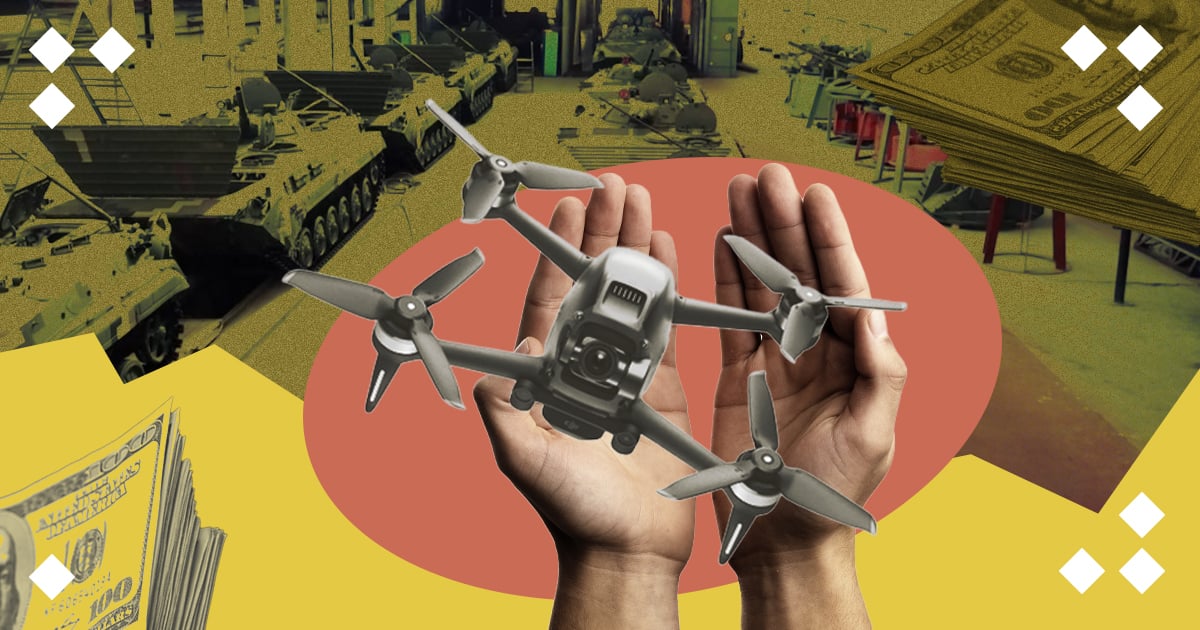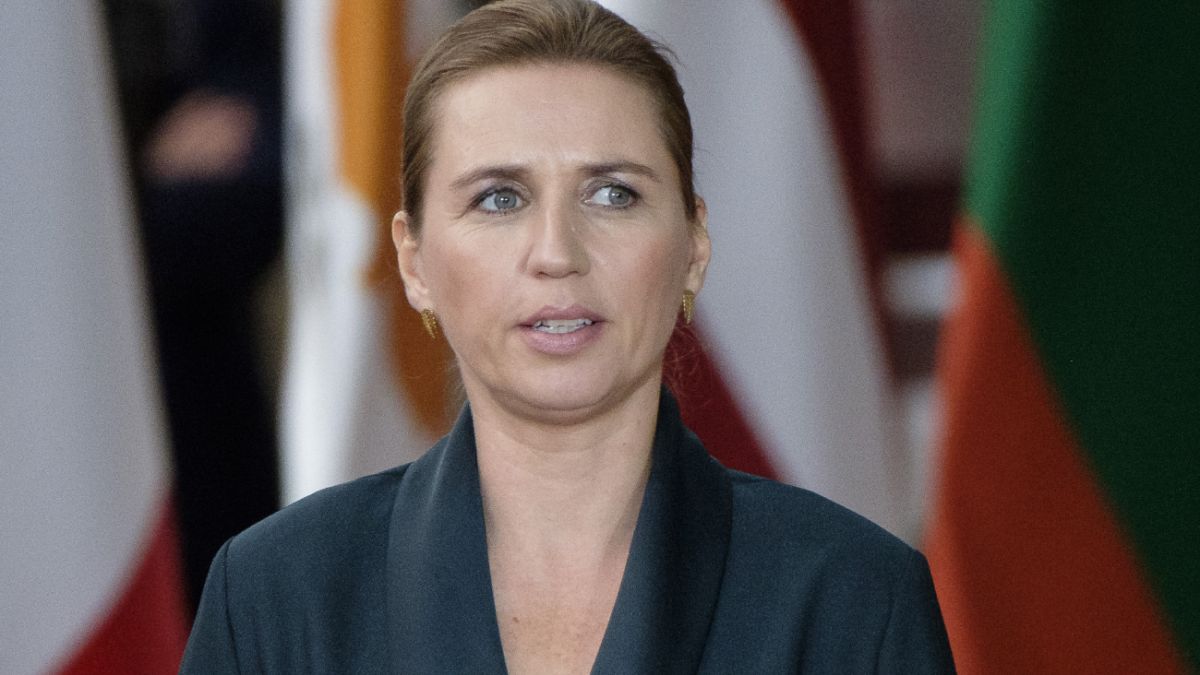When Russia launched its full-scale invasion of Ukraine in 2022, EU countries began ramping up their arms production. However, democracy and bureaucracy slowed the process. Now, European nations have the funds but lack military factories and production capacity. Ukraine, on the other hand, has factories operating below capacity due to insufficient funding. So why not invest in Ukraine's defense industry? Rubryka explains how the West is supporting Ukraine's weapon production.


In late 2023, Denmark purchased an abandoned factory near the village of Elling to restart artillery shell production. Nearly a year later, the factory remains empty, marked only by yellow warning signs along its fence that read, "Caution — Explosive Material."
Political wrangling has delayed the selection of a company to manufacture the ammunition, and an official tender has yet to begin. Denmark's Ministry of Defense hopes to choose a company to operate the factory by April next year — a full year behind schedule.
Rebuilding the factory will take another 18 months, and it won't reach total capacity until late 2026, three years after its purchase. Once operational, the facility will produce 120,000 artillery shells annually, primarily 155mm and 120mm calibers.
"This is unacceptable. We didn't want it to take this long, and I don't think it's reasonable for the process to drag out like this," said Danish Prime Minister Mette Frederiksen.


Danish Prime Minister Mette Frederiksen. Photo: RBC-Ukraine
Denmark isn't alone. Other European countries face similar challenges. For instance, KNDS, Europe's leading tank manufacturer, couldn't expand its Munich testing site due to complaints from locals. Among the objections was a resident who said construction noise would disrupt his meditation, while others feared the noise would lower property value.
In Troisdorf, Germany, Diehl Defence has been unable to secure permits to expand its factory in the city center. This expansion would have boosted the production of detonators and components for the IRIS-T air defense system, which has been critical to Ukraine's air defenses during the war.
The mayor of Troisdorf, however, believes the city center is better suited for housing or business development than for factories making explosive materials. As a result, Diehl Defence is still negotiating with local communities and has yet to start building new facilities.
Helmut Rauch, CEO of Diehl Defence, noted that securing permits for defense-related construction or expansion can take months — sometimes up to 18. Officials "don't seem to understand that Europe is in a critical political situation," he said.
A report by The Wall Street Journal highlights these issues in the European defense industry. Since the invasion began, European nations have increased defense budgets to the highest levels since the Cold War era.
However, efforts to scale up Europe's military-industrial complex often stall due to red tape, undermining the pace needed to counter Russia's rapidly expanding defense industry. This slow progress leaves Ukrainian forces grappling with constant shortages of various types of weapons.
"We are stuck in a mindset of peace, thinking that we have plenty of time," Danish Prime Minister Mette Frederiksen said in an interview. "We must make the logic of war part of our own foundation and ask ourselves, 'What do we need?' and then produce it."
Meanwhile, many Ukrainian defense factories have the potential to produce more but remain underutilized due to funding constraints. In an interview with The Financial Times, Oleksandr Kamyshin, a strategic advisor to Ukraine's President, revealed that Ukraine has 200 facilities capable of producing $20 billion worth of weapons this year and $30 billion next year.
However, the Ukrainian government has only $10 billion for military procurement this year, leaving a $10 billion funding gap. This means Ukraine's defense industry can only operate at half its potential — assuming all weaponry is sourced domestically.
Despite the challenges, Ukrainian-made equipment is not only innovative but also cost-effective. "Items which cost the Americans $1,200 [to make] we do for $58," said Robert Brovdi, founder of the Magyar's Birds aerial reconnaissance unit.
European countries have the funds, but their factories are already operating at total capacity, and quickly scaling up production is challenging. Meanwhile, many Ukrainian factories are underused due to insufficient state funding to expand domestic weapons procurement. This presents a logical opportunity: Western partners could support Ukraine not only by providing their arms but also by investing in Ukraine's defense industry.
Illustrative photo: ArmyInform
At the start of the full-scale invasion, Ukraine's defense industry wasn't prepared to handle substantial Western funding. However, according to Ukrainian Prime Minister Denys Shmyhal, the country tripled its weapons production in 2023 and doubled that figure in the first eight months of 2024. While European partners have the money, they lack the production capacity to meet Ukraine's needs.
"I think there's a realization that Europe is not capable of producing the weapons that Ukraine needs, and the easiest way is for the Ukrainians to do it themselves," a European diplomat told The Washington Post, speaking on the condition of anonymity because of the issue's sensitivity. "If the Ukrainians have the materials and money, they can do it much quicker themselves."
This gave rise to the initiative ZBROYARI: Manufacturing Freedom — a global campaign to gather funds from partner countries for Ukrainian-made arms. The ultimate goal is to secure $10 billion to fully utilize Ukraine's defense industry, with a total funding of $20 billion.
Denmark was the first country to respond, initially allocating $28.5 million for Ukrainian weapons and increasing its contribution by another $170 million. Moreover, Denmark will sign new contracts with Ukrainian manufacturers and cover existing agreements between Ukraine's Ministry of Defense and local producers.
The European Union also invested $440 million from frozen Russian assets into Ukrainian arms production via Denmark. In June, Denmark and the EU established a procedure for this project, granting Denmark control over a $630 million fund. These funds will be used to fulfill contracts signed by Ukraine's Ministry of Defense with local manufacturers.
Dennis Virkelyst, a senior official in Denmark's Ministry of Defense, stated that his country imposes no restrictions on the use of the purchased weapons, meaning there will be no bans on strikes deep into Russia or other limitations. Thanks to this pilot project, 18 Ukrainian-made 155mm Bohdana self-propelled artillery systems have already been funded and produced.
A Bohdana self-propelled artillery system. Photo: EP
Other countries have also joined the ZBROYARI initiative: Canada allocated $2.1 million for Ukrainian arms, the Netherlands sent $18.7 million, Lithuania — $11.1 million, the United Kingdom — $67 million, and Denmark — with an extra $16.5 million. The initiative has raised $750 million.
"Similar decisions are expected from other partner countries. For instance, US Secretary of State Antony Blinken announced a $2 billion aid package for Ukraine, part of which is intended to support Ukraine's defense industry and procure weapons from Ukrainian manufacturers. Negotiations are ongoing at various levels, involving different countries and companies," Dmytro Hryshchak, Ukraine's Deputy Minister for Digital Development, Digital Transformation, and Digitalization, said in a comment to Rubryka.
A European official, speaking anonymously, also mentioned that several countries are reportedly considering adopting a similar scheme. These countries may either invest directly in Ukraine's defense industry or request Denmark channel their funds.
According to the Ukrainian publication Militarnyi, Germany is considering financing weapons procurement from Ukrainian producers for the Ukrainian Armed Forces, and Baltic and Scandinavian countries have also expressed interest in investing in Ukraine's defense industry.
According to another anonymous European official, these investments represent "a watershed — not in terms of the amount of money, but the idea of investing government money in the Ukrainian defense industry." He noted that funds will primarily go toward producing missiles, drones, and other long-range weapons.
Ukrainian-made weapons have also attracted the interest of private companies from Western countries. These firms are investing in Ukraine's defense industry, partially facilitated by the Brave1 platform.
"This is a unique government project to develop Ukraine's defense technologies. Everyone understands the importance of Ukrainian defense tech solutions for saving lives on the front lines and accelerating victory," said the head of Brave1, Natalia Kushnerska, in an interview with the Economichna Pravda. "As a state, we must focus on increasing the number of defense technologies developed in Ukraine."
Brave1's priorities include developing drones, electronic warfare (EW) and intelligence systems, communication systems resistant to enemy interference, and technologies for demining and logistics.
One of the platform's key roles is to help companies secure funding. This can be done either through direct grants from Brave1 or by connecting companies with investors.
"When we launched this project, there were concerns that international investors wouldn't be interested in Ukrainian companies due to perceived risks like the ongoing war. Now we're hearing that they want to invest specifically in Ukrainian companies operating locally," said the head of Brave1.
Natalia Kushnerska. Photo: EP
"Thanks to the collaboration with private investors and international venture funds, Ukrainian defense tech developers have secured over $25 million in funding this year, compared to $5 million in 2023," said Ukraine's Minister of Digital Transformation, Mykhailo Fedorov.
The search for Western investors often takes place at summits or conferences, some of which are organized by Brave1. For example, the Defense Tech Valley summit in Kyiv (October 3–4, 2024) brought together investors, Ukrainian and foreign arms manufacturers, military officials, and government representatives. At the summit, investors were provided with a clear roadmap on how to invest in Ukrainian defense tech, and companies were able to showcase their developments and attract potential investments.
At this summit, the Ukrainian company Swarmer secured $2.7 million in foreign investments, connecting with some investors directly at the event. Swarmer specializes in AI solutions and software for drone swarms.
Fedorov anticipates that Brave1 will help attract $50 million by the end of the year. "The more investments, the faster companies can grow and scale their products," he said.
We created this article as part of the Recovery Window Network. For more information on the recovery of war-affected regions in Ukraine, visit recovery.win
Thirty-nine years ago, the Chornobyl nuclear disaster forced the resettlement of residents from areas contaminated… Читати більше
Recovery Camp is a psychosocial rehabilitation project for Ukrainian children that has been running for… Читати більше
Екологічна освіта, громадянська наука та цікава практика — складники ініціативи, яку втілили для молоді Краснокутської… Читати більше
A team of researchers has trained an AI model to see not just rubble in… Читати більше
У лікарнях Харкова та Ужгорода студенти під наставництвом психологинь, менторів та супервізора проводять для дітей… Читати більше
У Лубнах фахівці, які допомагають військовим, вчилися будувати довірливий контакт із тваринами, зокрема кіньми та… Читати більше
Цей сайт використовує Cookies.